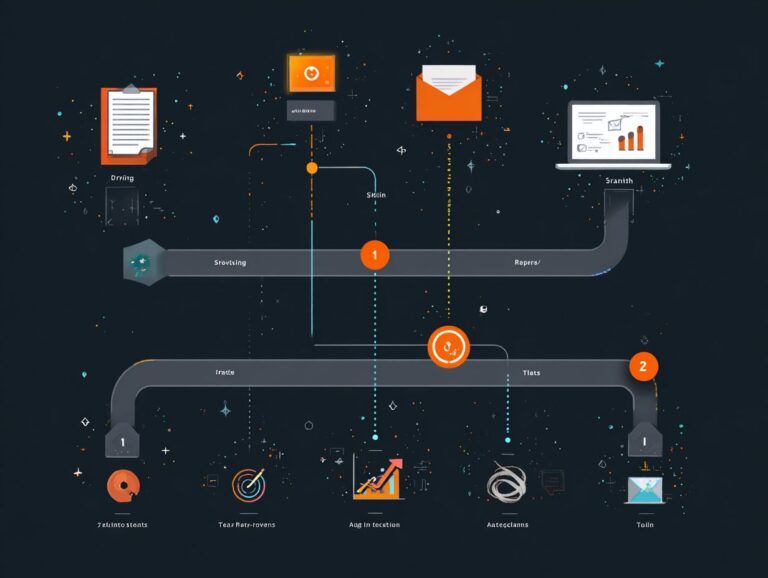Drip Email Campaign Integration: Process and Best Practices
Make the most of drip marketing by using email campaign integration effectively. This strategy improves your email marketing efforts and builds stronger customer relationships by sending specific emails. In this article, we’ll explain how to easily set up drip campaigns, provide tips for making the most of marketing tools, and show how to make content that connects with your audience. Change how you handle emails and increase your sales!
Key Takeaways:
- Integrate drip email campaigns for improved customer engagement and increased conversion rates.
- Define your audience and choose the right email marketing tool for successful drip campaigns.
- Create tailor-made content, use interesting subject lines, and set up automatic sending for successful drip email campaigns.
- Benefits of Drip Email Campaign Integration
- Setting Up Your Drip Campaign
- Designing Effective Email Content
- Automation and Scheduling
- Measuring Success and Adjusting Strategy
- Best Practices for Drip Email Campaigns
- Frequently Asked Questions
- 1. What is a drip email campaign?
- 2. What is the process for integrating a drip email campaign?
- 3. What are the benefits of drip email campaign integration?
- 4. What are some best practices for drip email campaign integration?
- 5. Can I integrate a drip email campaign with my current email marketing platform?
- 6. How can I measure the success of my drip email campaign integration?
Benefits of Drip Email Campaign Integration
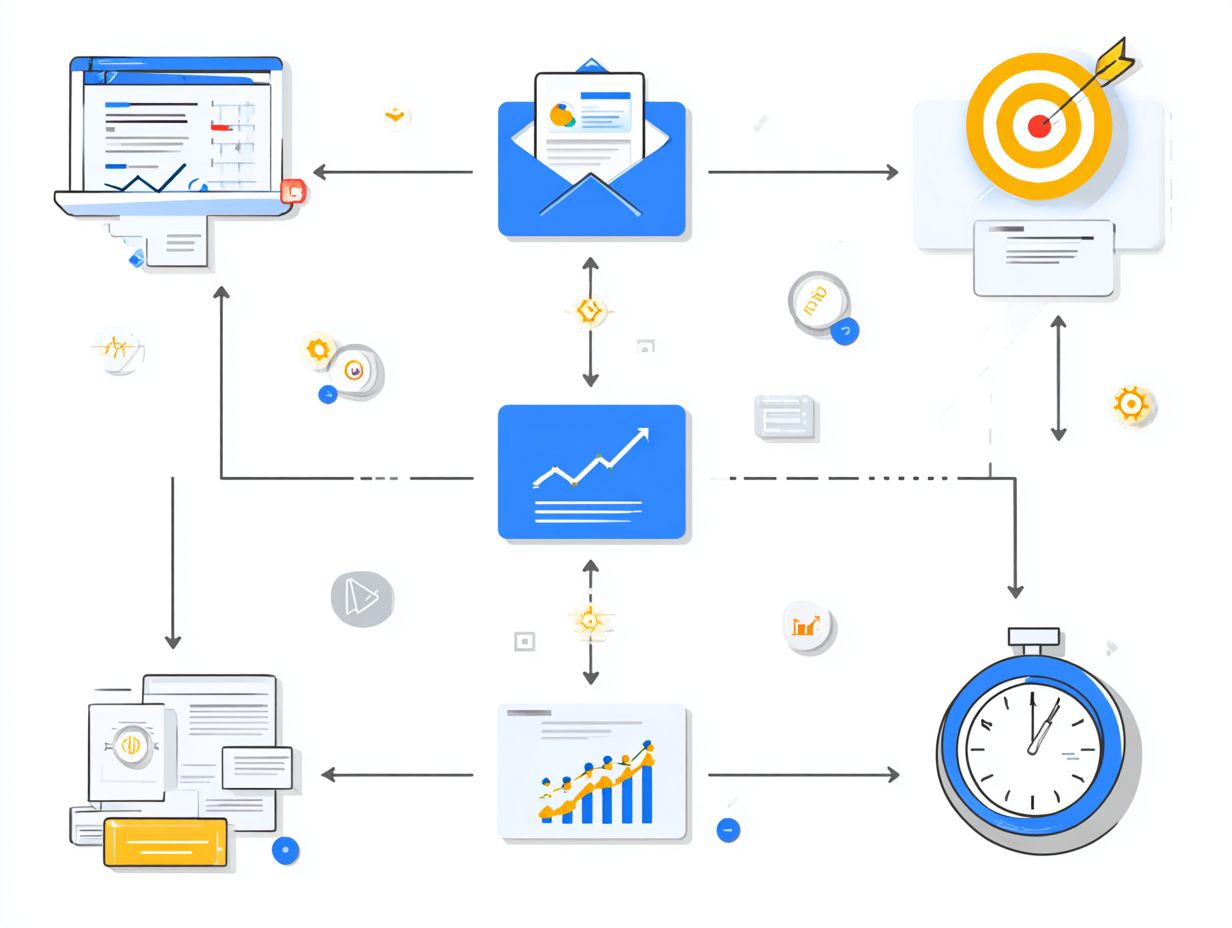
Using drip email campaigns helps businesses increase interaction and sales, which makes them a key part of any marketing plan.
1. Improved Customer Engagement
Drip campaigns can improve customer engagement by sending customized messages based on audience interests, resulting in higher interaction rates.
A retail company sent specific emails to customers based on their shopping habits, including follow-up messages when they left items in their carts. This strategy led to a 35% rise in open rates and brought back previously inactive users.
Tools like Mailchimp or ActiveCampaign can run these specific campaigns by dividing your audience into groups. By looking at user behavior data, you can create messages that match personal preferences, like giving discounts on items people have recently looked at. This makes it more probable to complete a sale.
2. Increased Conversion Rates
Businesses can see conversion rates soar by implementing drip email strategies that nurture leads through timely and relevant communications.
For instance, a company that adopted a targeted drip campaign noted a 20% increase in conversions over six months. To get started, segment your audience based on their behaviors and interests.
Use tools like Mailchimp or HubSpot to send emails automatically. Make specific content that addresses certain needs, helping customers decide to buy. Checking how often emails are opened or links are clicked can improve your strategy for more success.
Setting Up Your Drip Campaign
Creating a successful drip campaign needs thoughtful planning and knowing how your audience interacts at different stages.
1.Defining Your Audience
Begin by identifying who you want to reach. Use your own data to group them by age, location, and habits for better communication.
Use tools like Google Analytics to analyze user age, gender, and interests. To learn about your website’s visitors, look at the ‘Audience’ section.
Use behavioral data to find user engagement trends, like which pages are visited and how long users stay on the site, so you can adjust your content accordingly.
HubSpot can complement this by segmenting your email lists based on interactions, ensuring your messaging speaks directly to the interests of each subgroup. Using this information, you can create campaigns that connect with your audience on a personal level.
2. Choosing the Right Email Marketing Tool
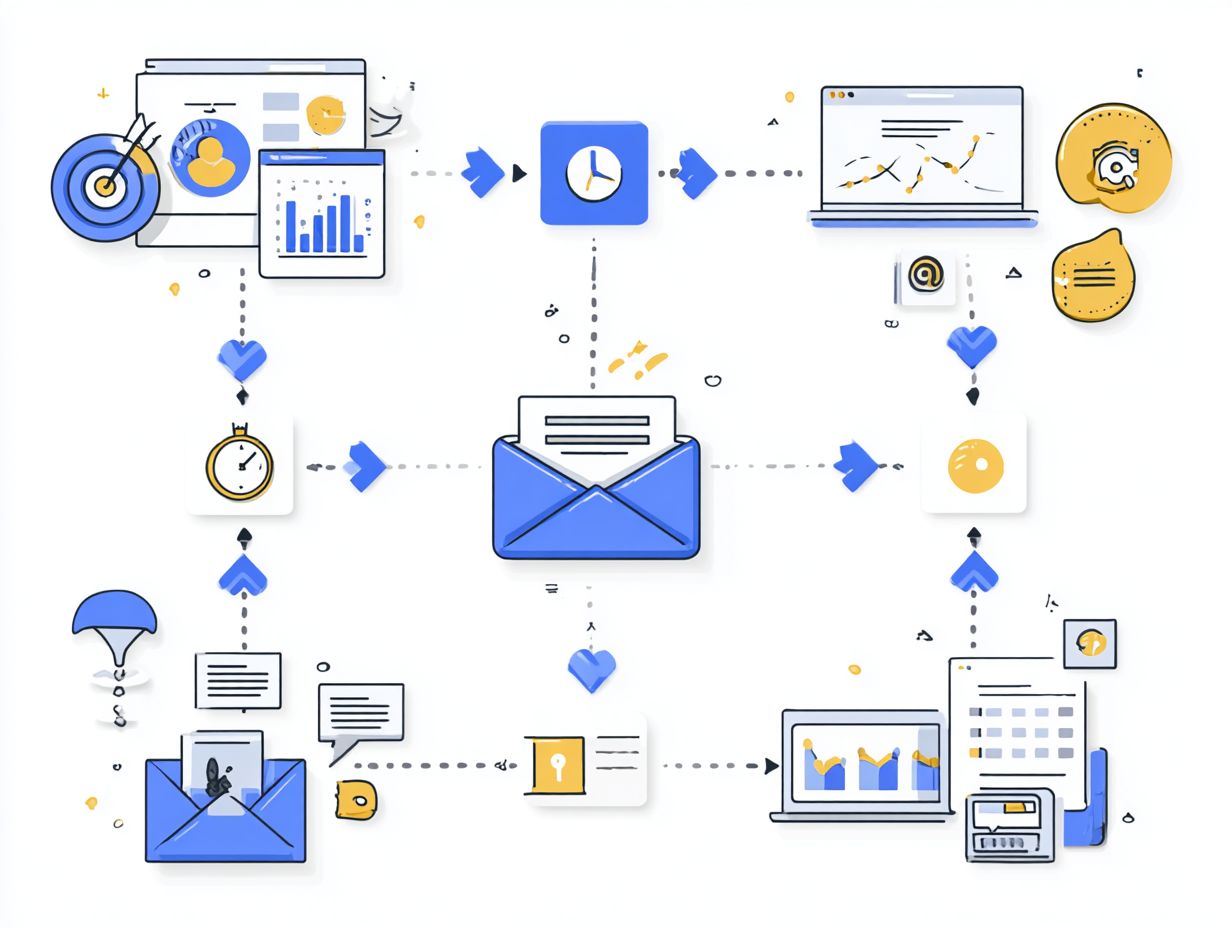
Choosing the best email marketing tool is important. You can consider the following options:
- Mailchimp ($10/month)
- Constant Contact ($20/month)
- ActiveCampaign ($15/month)
Mailchimp is great for beginners. It provides easy ways to change templates and simple data reports, making it good for small businesses. Constant Contact is well-known for its reliable customer support and event management features, which make it a great option for nonprofits and event planners.
ActiveCampaign is great at setting up automatic processes. It helps businesses divide their audience for focused marketing efforts, which is especially useful for online stores.
When choosing your tool, consider factors such as your budget, required features, and the level of support you may need to achieve your marketing goals.
Designing Effective Email Content
Effective email content is key to the success of your drip campaigns, needing careful design and personalization to connect with your audience. For instance, learning how to effectively ask for feedback, as discussed in this guide on crafting customer feedback emails, can significantly enhance your engagement efforts.
1. Personalization Techniques
Adjusting email content according to what users do can make your emails much more relevant to each person.
For instance, using recipient names in the subject line can increase open rates by up to 26%. Incorporating past purchase data allows you to recommend related products, enhancing cross-selling opportunities.
Another useful approach is to review browsing history to send customized content, such as a newsletter showing items users looked at but did not buy. Using tools like Mailchimp for automatic processes or Segment for linking user data can simplify these tasks, creating stronger relationships and increasing interest in your email campaigns.
2. Crafting Compelling Subject Lines
Creating engaging subject lines can increase your email open rates by up to 50%, which makes them a key element of your email strategy.
To write effective subject lines, keep them under 50 characters so they are easier to read. Encourage quick decisions by saying things like “Final opportunity to get 20% off!”
Using personalization can increase interest. For example, use “[Name], take advantage of this special offer!” You can also try asking questions such as “Want to change how you get things done?” Check your email statistics regularly to improve your strategy and try out various formats for the best outcomes.
Automation and Scheduling
Using tools and scheduling are important for managing drip email campaigns effectively, ensuring emails are sent on schedule and keeping recipients engaged.
Timing Your Emails
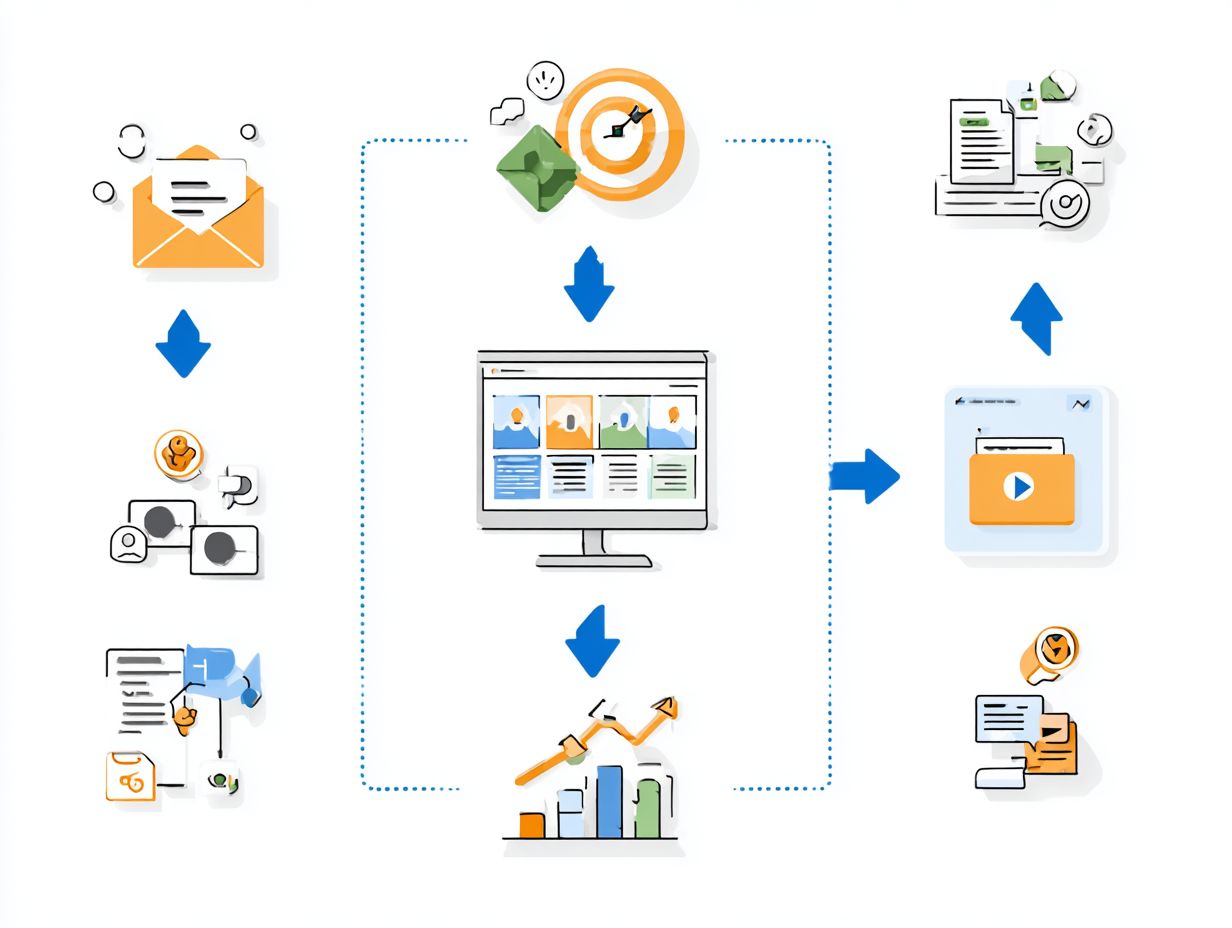
The timing of emails is very important in email marketing. Research shows that emails sent at 10 AM and 2 PM get opened the most. To improve your email timing, try sending emails at different times and look at how people interact with them over a few weeks.
For instance, use a tool like MailerLite to send test campaigns at different intervals, such as 9 AM, 12 PM, and 4 PM. Track open rates and click-through rates to identify patterns.
Pay attention to your audience’s specific demographics; for example, if targeting working professionals, mid-morning slots might be best. Regularly reviewing your schedule can improve participation and results.
Measuring Success and Adjusting Strategy
Using analytics to track results is important for enhancing your drip email campaigns and meeting your marketing objectives. This approach aligns with the principles outlined in our analysis of CRM Data Audit: Procedures and Best Practices, which emphasizes the significance of structured data in optimizing marketing strategies.
Key Performance Indicators (KPIs)
Key Performance Indicators (KPIs) like open rates, click-through rates, and conversion rates are essential for measuring the effectiveness of your campaigns.
To effectively monitor these metrics, use tools like Google Analytics or the analytics features in your email marketing platform. Aim for an open rate of at least 20% and a click-through rate between 2-5%.
Set up goals in Google Analytics to measure conversions directly linked to your email campaigns. Regularly review these KPIs; adjusting your content or send times can dramatically influence results.
For example, testing different subject lines could lead to better open rates, while improving your call-to-action might increase conversions.
Best Practices for Drip Email Campaigns
Using well-established techniques in drip email campaigns can significantly increase their effectiveness and overall revenue.
A/B Testing for Optimization
A/B testing is a useful way to improve drip campaigns, helping marketers find the best content and strategies by analyzing data.
To run A/B tests on emails, begin with setting up your hypothesis. For example, you might want to see if a more custom subject line leads to higher open rates. Next, create two versions of your email: one with the original subject line and one with the tested variation. Use tools like Mailchimp or Litmus to divide your audience into groups and monitor results easily.
Analyze the results after your campaign concludes, focusing on metrics like open rates and click-through rates. A successful example includes a company that increased their open rates by 20% through tailoring their subject line to audience demographics.
Frequently Asked Questions
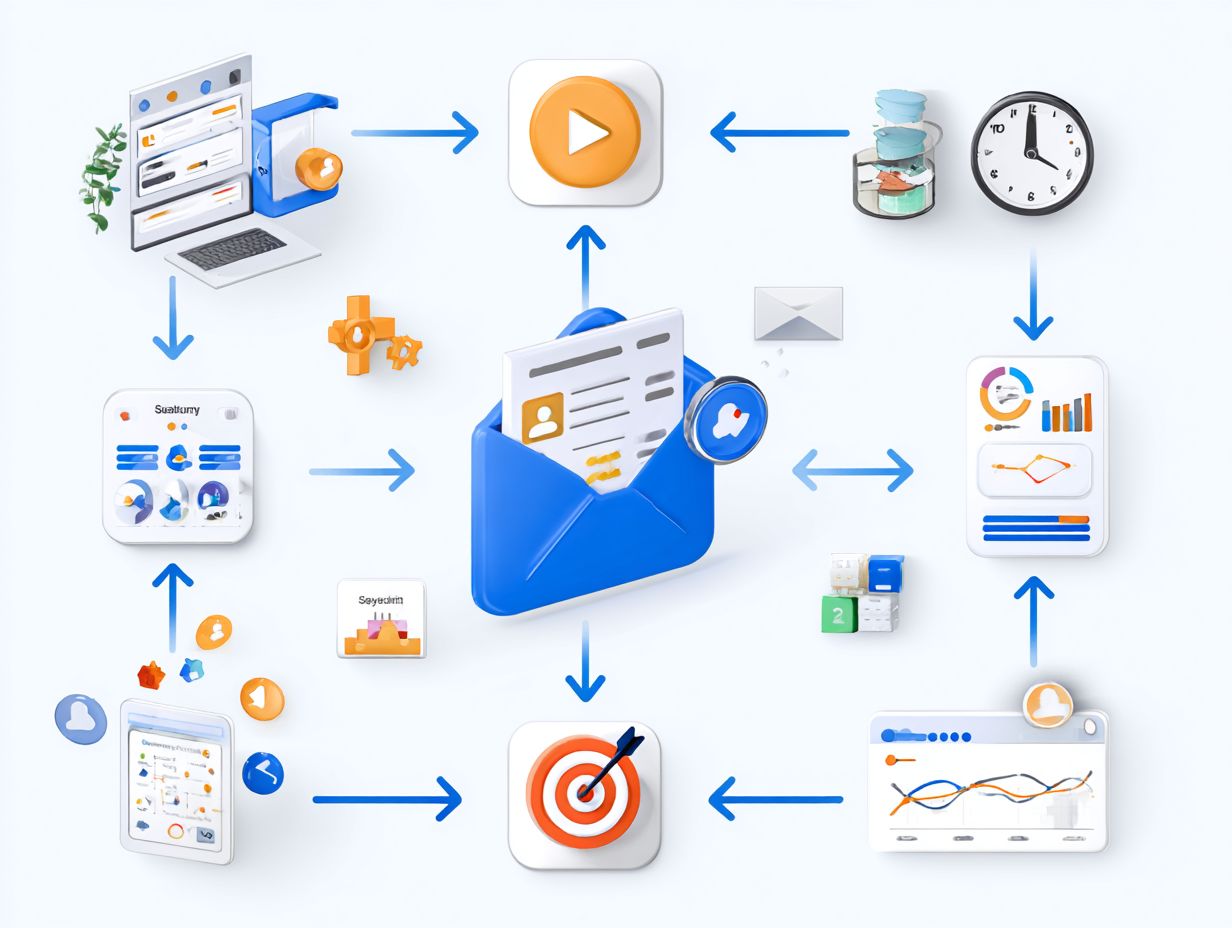
1. What is a drip email campaign?
A drip email campaign is a type of marketing automation strategy where a series of pre-written emails are sent to subscribers or leads at set intervals. This allows businesses to nurture leads and build relationships with potential customers over time.
2. What is the process for integrating a drip email campaign?
The process for integrating a drip email campaign involves first choosing a marketing automation platform, setting up email templates, creating a subscriber list, and then scheduling and launching the campaign. Ongoing maintenance and optimization are also important for a successful integration.
3. What are the benefits of drip email campaign integration?
Drip email campaign integration can help businesses save time and resources by automating the process of nurturing leads. It can also improve lead engagement and conversion rates by providing targeted and timely communication to potential customers.
4. What are some best practices for drip email campaign integration?
Some best practices for drip email campaign integration include segmenting your subscriber list based on demographics or behaviors, personalizing the emails, and using clear and concise subject lines. It’s also important to regularly analyze and adjust your campaign for optimal results.
5. Can I integrate a drip email campaign with my current email marketing platform?
It depends on your current email marketing platform and its capabilities. Some platforms may have built-in drip campaign functionalities, while others may require the use of third-party integrations. It’s best to research and consult with your email marketing provider for more information.
6. How can I measure the success of my drip email campaign integration?
You can measure the success of your drip email campaign integration by tracking key metrics such as open rates, click-through rates, conversion rates, and the overall ROI of the campaign. It’s important to look at and study the data often to make better choices for upcoming campaign changes.

